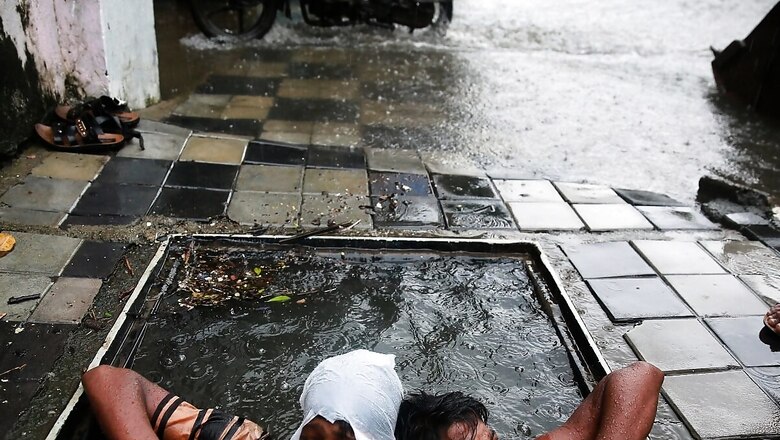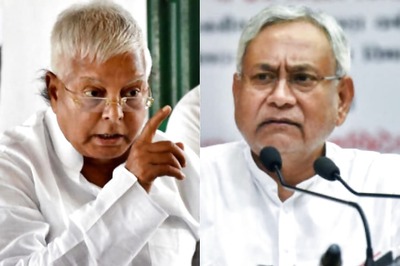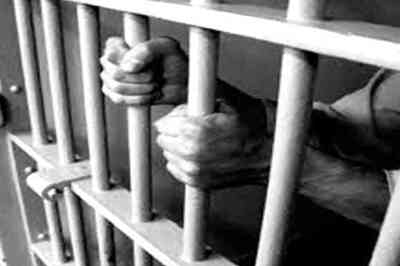
views
On October 9, Ramasre (41) and Babundra Kumar Singh (29) suffocated to death while cleaning a sewer in Pillanji, a cramped urban village adjacent to Sarojini Nagar in south Delhi. They were reportedly clearing garbage from the sewer line at a construction site managed by NBCC, a public sector undertaking. The workers had not been provided with safety equipment. Such tragic incidents, not uncommon, highlight a grim aspect of urban governance. Earlier this year, Delhi NCT was shaken by the suffocation deaths of two sanitation workers in Jasola Vihar and another in Rohini, both occurring in May.
There are established safety norms, such as: a) workers must be equipped with safety masks, harness belts, and helmets; b) civic authorities should supply mechanised equipment for hazardous tasks like cleaning underground sewers; and c) a matchstick should be lit at the sewer’s opening to detect poisonous gases. However, these safety measures are frequently disregarded by unscrupulous contractors.
For example, during the Shakurpur tragedy in northwest Delhi on November 23, 2019, not even a rope was available at the scene. Three sanitation workers were exposed to poisonous gas, one of whom later died. On August 7, 2017, three workers perished in Jal Vihar, south Delhi, while cleaning a sewer. Their families successfully campaigned to increase the government-ordained compensation, which had been fixed at Rs 10,00,000 since 1993. Earlier this year, on May 19, a single-judge bench of the Supreme Court revised the compensation to Rs 30,00,000, ruling that the previous amount was outdated.
The deaths of sanitation workers while on duty appear to be a nationwide issue. According to figures provided by Ramdas Athawale, MoS for Social Justice and Empowerment, in the Lok Sabha (via unstarred question no. 2462) on August 6, 2024, the number of such deaths in India were as follows: 53 (2014), 69 (2015), 56 (2016), 105 (2017), 76 (2018), 133 (2019), 34 (2020), 67 (2021), 84 (2022), and 59 (2023) over a ten-year span.
During this same period, ISRO successfully launched Mangalyaan into Mars’ orbit and sent Chandrayaan-2 to explore the moon’s far side. Dr L. Hanumanthaiah raised the issue of sanitation workers’ deaths in the Rajya Sabha on December 2, 2019, following the Shakurpur tragedy. He questioned how, on the one hand, India could build Chandrayaan, yet not develop machines to handle hazardous tasks that could be provided to civic bodies. He emphasised that the government should only procure mechanised equipment and prevent humans from entering such dangerous environments. Despite these impassioned appeals by lawmakers, the suffocation deaths of sanitation workers continue unabated. This is indeed a slur on the face of India’s Smart City Mission.
II
Proponents of “decolonisation” tend to avoid malodorous and filthy subjects like sewerage. This is despite the fact that the sewerage system was one of the initiatives introduced by the colonial administration. As J.A. Turner noted in 1914, “To place the collection and disposal of human and animal excrement under proper control is one of the first principles of practical sanitation in India. It leads to a reduction in sickness rates, mortality, and an overall improvement in the moral, physical, and hygienic condition of the people” (Sanitation in India, p. 167). The development of sewerage systems was preceded by scientific studies estimating the average amount of excreta generated by India’s largely vegetarian population.
The Report of the Environmental Hygiene Committee (1949) endorsed the view that the removal of human excreta without polluting soil and water, and without exposing it to flies, could be satisfactorily accomplished by transporting it through closed and impervious sewers using a current of water (Report, p. 61). The report also lamented the slow pace of progress, noting that while the first sewers were laid in Calcutta in 1867, by the 1941 Census, only about 10 million out of India’s 320 million people were nominally served by the system.
For a long time, most latrines in India were dry-pit rather than sanitary, making manual scavenging a far more significant social problem than the cleaning of manholes. The cleaning of septic tanks in dry-pit latrines also posed risks, in addition to being undignified. In 1980-81, the Ministry of Home Affairs launched a centrally sponsored scheme aimed at the liberation of manual scavengers by converting dry latrines into low-cost pour-flush latrines and providing alternative employment for manual scavengers. This scheme targeted entire towns for conversion to sanitary latrines. However, a lack of coordination between various departments and schemes hampered its success in the 1980s.
By the end of the 1990s, only Karnataka, Kerala, Gujarat, and Tripura had declared themselves free of scavenging. 732 out of 766 districts in the country have been reported as manual scavenging-free, as informed by Ramdas Athawale in Lok Sabha on August 6, 2024. While the abolition of dry-pit latrines and the rehabilitation of manual scavengers is undoubtedly a noble objective, the conversion to sanitary latrines also implies an expansion of the sewerage system.
While the sewerage system solved one problem, it created another. By conveying human excreta into water, we pollute and suffocate rivers and water streams. Sewage treatment plants (STPs) have a notorious tendency to malfunction. Sopan Joshi, in his book Jal, Thal, Mal (though the columnist has misplaced his copy), argues that the sewerage system disrupted the natural balance where the excreta of one organism acted as food for another organism or plant. By directing excreta into water, we are polluting water bodies. There is some merit to this argument. However, open defecation is no longer acceptable (and abolishing it was one of the goals of the Swachh Bharat Mission), and it is hard to imagine modern cities and towns without sewerage networks.
Rao Saheb Visvanath Narayan Mandlik (1833–1889), a 19th-century lawyer and legislator from the Bombay Presidency, delivered a two-part lecture on drainage in Bombay at the Framjee Cowasjee Institute on December 23, 1882, and January 6, 1883, before a large audience that included Dadabhai Naoroji on the dais. It was a critique of the drainage system, which was still under development and experimentation, not only in India but also abroad. It appears that flaws in the planning and design of drainage systems were not confined to India. Rao Saheb Mandlik opposed completely closed sewers and advocated for the inclusion of manholes. He anticipated the danger of sewer gas blowing back into individual houses, not to mention the risk posed to sewer cleaners, if the drainage was not properly designed. He also opposed the colonial administration’s disturbance of the traditional waste disposal system in villages, arguing that its merits were not properly understood.
III
Since independence, India has seen an estimated population increase of one billion people. This growth is reflected in the urban demographic share, which has shot up from 17 per cent in 1951 to 31 per cent in 2011. Metropolises have witnessed rapid, and at times unplanned, growth, putting excessive strain on sewerage systems and garbage disposal. The NCT of Delhi has expanded by incorporating scores of urban villages that once lay on the margins of the Mughal and British city. The frequent clogging of sewerage lines, combined with ad hoc measures adopted to clean them manually, leads to fatalities that few wish to speak about.
While the Swachh Bharat Mission has been in existence for the last decade, the National Action for Mechanised Sanitation Ecosystem (NAMASTE) was initiated only last year. The scheme, pursued through the collaboration of the Ministry of Social Justice and the Ministry of Housing and Urban Affairs, was launched in July 2023 and aims to achieve zero fatalities for sanitation workers by promoting safe cleaning practices through trained and certified sanitation workers. However, there is still a long way to go to achieve this goal.
Kolkata boasts India’s, if not the world’s, only memorial commemorating the heroic deed of a person who laid down his life to retrieve two sewer workers trapped inside a manhole. The bilingual memorial records that on May 12, 1907, Nafar Chandra Kundu (26) met a gallant end while trying to rescue two “Mahomedan coolies” from the manhole situated opposite the memorial. The memorial further notes that Kundu was a member of the Entally Ramakrishna Mission, and it was erected by his European and Indian admirers through subscription.
Long live Nafar Chandra Kundu, after whom a road is named in Kolkata. However, it is a pity that manhole tragedies have persisted from the early 20th century into the 21st. The sooner such tragedies become a matter of the past, the better it will be for the nation’s dignity.
The writer is author of the book ‘The Microphone Men: How Orators Created a Modern India’ (2019) and an independent researcher based in New Delhi. Views expressed in the above piece are personal and solely those of the author. They do not necessarily reflect News18’s views.



















Comments
0 comment